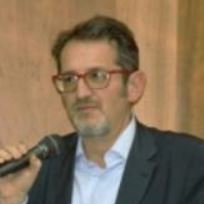Multiscale and Multitemporal High Resolution Remote Sensing and Non-Destructive Testing for Archaeology and Monumental Heritage: From Research to Preservation
A special issue of Sensors (ISSN 1424-8220). This special issue belongs to the section "Sensing and Imaging".
Deadline for manuscript submissions: closed (15 November 2021) | Viewed by 7620
Special Issue Editors
Interests: applied geophysics; ground-penetrating radar; electrical resistivity tomography; seismic tomography
Special Issues, Collections and Topics in MDPI journals
Interests: applied geophysics; earth sciences; archaeogeophysics; ground penetrating radar; electrical resistivity tomography; gradiometer; integrated geophysical methods; archaeological prospections; landscape geophysics; inverse problems; remote sensing
Special Issues, Collections and Topics in MDPI journals
Interests: heritage science; remote sensing in archaeology; architectural conservation; archaeological science; humanities
Special Issues, Collections and Topics in MDPI journals
Special Issue Information
Dear Colleagues,
This Special Issue is based on the 2020 IMEKO TC-4 International Conference on Metrology for Archaeology and Cultural Heritage, Special Session 11 (http://www.metroarcheo.com/index.php/special-session-11).
The availability of high-resolution remote sensing and non-destructive testing techniques provides multiscale and multitemporal approaches in the study of ancient settlements and landscapes, the reconstruction of their development over centuries, and their preservation.
Research in both landscape archaeology and diagnosis conservation requires the integration of different techniques of high-resolution remote sensing: satellites (optical and radar data), aerial data (photos, IR and Lidar data) from airplanes and UAVs, ground (integration of different geophysical techniques, field walking, DGPS topographical surveys), and non-destructive testing. The Issue will introduce new field surveys, new approaches, and new integrations and analyses of geo-archaeological data for the study of the archaeological sites to enhance the knowledge of the investigated area related to historical reconstruction, production of tools for preventive archaeology, and preservation of archaeological and monumental heritage; for which, non-invasive diagnosis through micro-geophysics is very useful.
Topics:
- Satellite remote sensing for archaeology using optical and radar data: new perspectives, semiautomatic and automatic approaches for extracting cultural information, the study of the interconnection between environmental changes and dynamics of human frequentation;
- Aerial archaeology: from historical and traditional air-photos to IR and Lidar data;
- Integration of ground remote sensing techniques (geophysical prospecting) and field walking and DGPS topographical surveys for the study of ancient settlements and landscapes;
- Integration of non-invasive methods for preservation and protection of monumental heritage (micro-geophysics);
- Integrated geophysical methods in archaeological sites;
- Ancient extreme events in the geo-archaeological record, such as floods, landslides, earthquakes, and tsunamis;
- Climatic and anthropogenic causes of ancient environmental and vegetational changes;
- Managing hillslope instability and soil erosion problems in the past.
- Application and integration of non-invasive EM methods (e.g., GPR, HSR, IR Thermography, etc.) in NDT for in situ analysis of ancient buildings;
- Use and perspectives of non-invasive EM methods (e.g., Multispectral Imaging, XRF, etc.) for in situ analysis of Cultural Heritage artworks (e.g., wall paintings, paintings, manuscripts, mosaics, ceramics, etc.).
Dr. Giovanni Leucci
Guest Editor
Manuscript Submission Information
Manuscripts should be submitted online at www.mdpi.com by registering and logging in to this website. Once you are registered, click here to go to the submission form. Manuscripts can be submitted until the deadline. All submissions that pass pre-check are peer-reviewed. Accepted papers will be published continuously in the journal (as soon as accepted) and will be listed together on the special issue website. Research articles, review articles as well as short communications are invited. For planned papers, a title and short abstract (about 100 words) can be sent to the Editorial Office for announcement on this website.
Submitted manuscripts should not have been published previously, nor be under consideration for publication elsewhere (except conference proceedings papers). All manuscripts are thoroughly refereed through a single-blind peer-review process. A guide for authors and other relevant information for submission of manuscripts is available on the Instructions for Authors page. Sensors is an international peer-reviewed open access semimonthly journal published by MDPI.
Please visit the Instructions for Authors page before submitting a manuscript. The Article Processing Charge (APC) for publication in this open access journal is 2600 CHF (Swiss Francs). Submitted papers should be well formatted and use good English. Authors may use MDPI's English editing service prior to publication or during author revisions.








